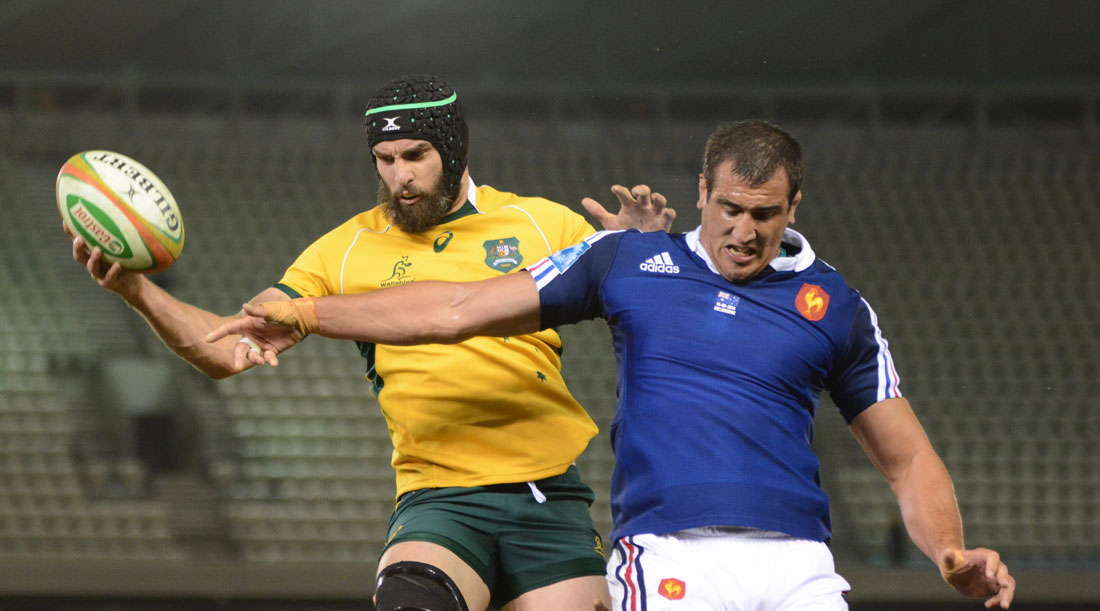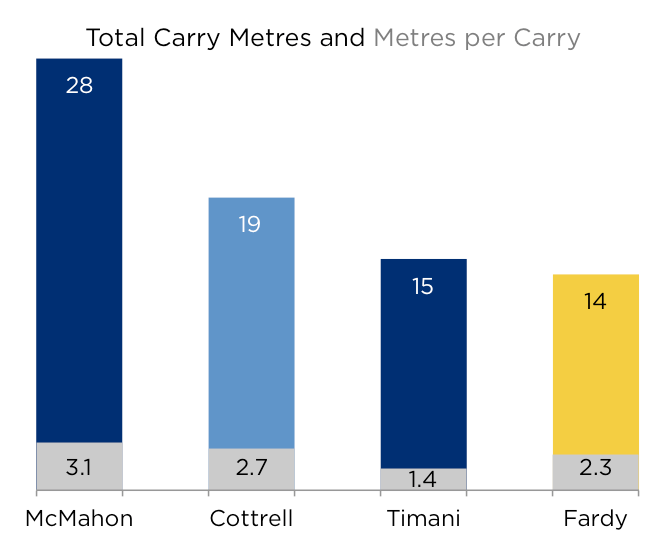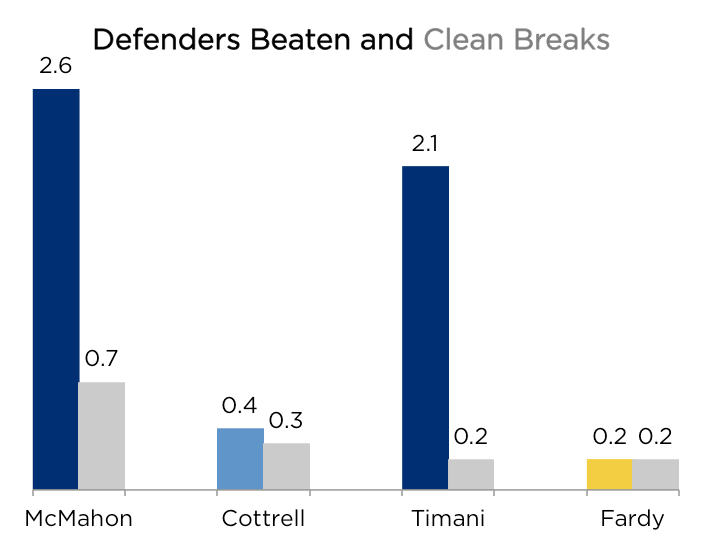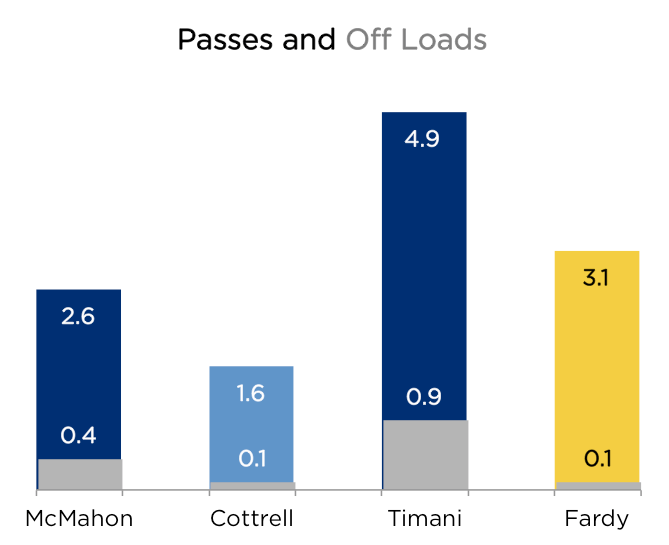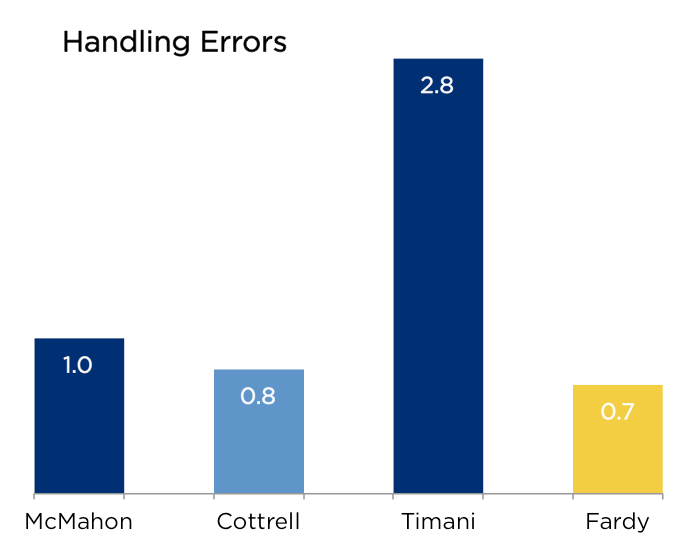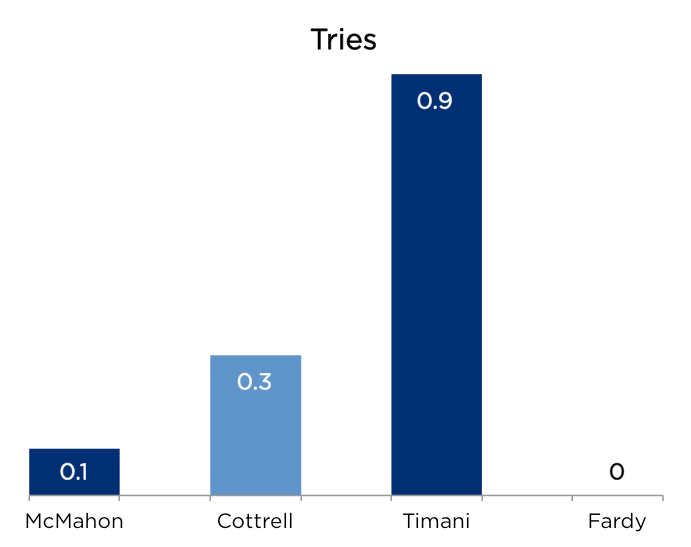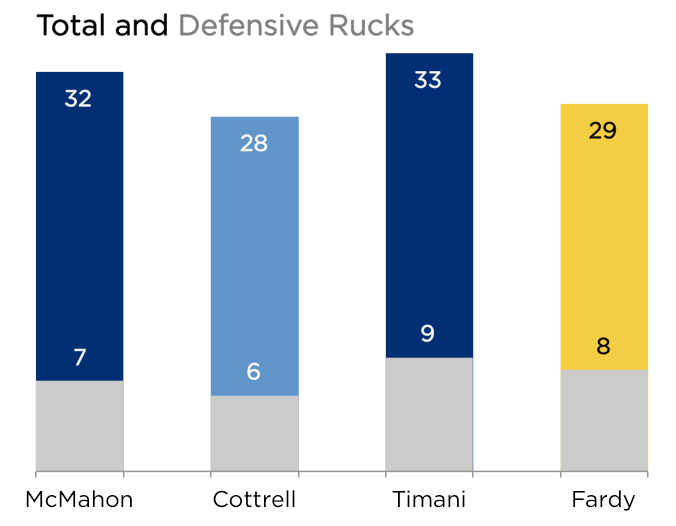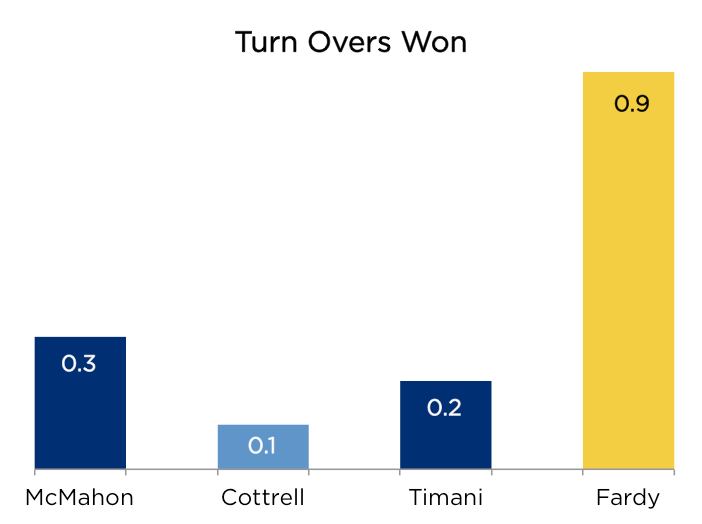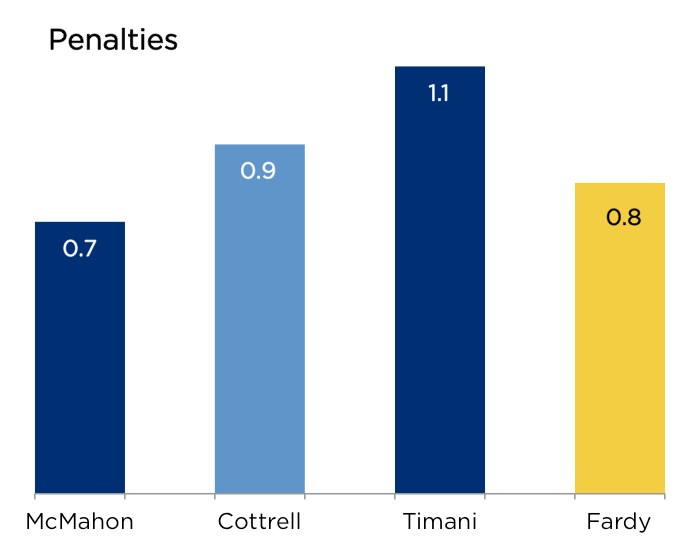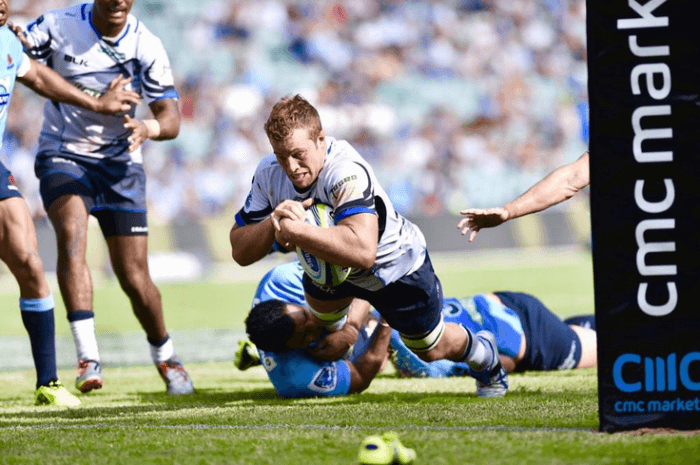There was plenty of argument when it came to selecting the Wallabies Openside Flanker by stats, but in my humble opinion Blindside Flanker is murkier. The theory goes that a good blindside is rarely seen, because he’s either doing the dark job no-one else wants and/or something thoroughly illegal.
Perhaps this is why our journey through the stats to find our choice is such a winding road, starting with the contenders. There are quite a few forwards around who could play six (Luke Jones, Dave Dennis, Higgers), but for the stats we need to look at those who did in 2015, taking our list down to Sean McMahon, Angus Cottrell and Scott Fardy. We’ve slid Lopeti Timani in due to popular demand.
Thanks to Forcefan for putting the numbers together. Note: All of the statistics reflect average per 80 minutes played during 2015.
ATTACK
When it comes to ball running, Sean McMahon is the Michael Hooper of blindsides, making close to twice as many metres and line breaks as most other candidates. McMahon is the biggest tackle buster in the Rebels by some stretch.
From a ball handling point of view, Timani clearly plays a key linking role within the team – it may well be that this role results in him spilling some ball under pressure. It’s a part of Cottrell’s game that’s lacking, but then again he is playing for the Force!
When it comes to dotting the ball down, Timani is a freak scoring damn near a try a game. Fards is yet to trouble the scorer.
DEFENCE
The young McMahon isn’t just a workhorse in attack, he’s also got a motor in defence, topping the tackle count, yet keeping the lowest missed tackle ratio. Old man Fardy makes about half as many tackles.
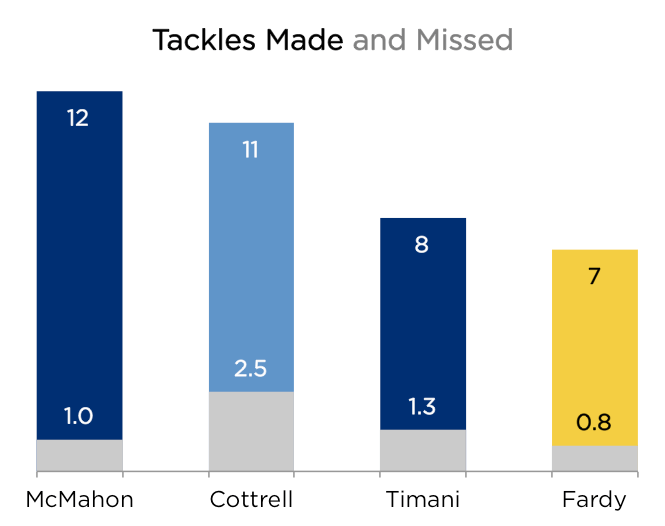 When it comes to smashing rucks the numbers are about even, Timani just shading it.
When it comes to smashing rucks the numbers are about even, Timani just shading it.
It’s in the technical side of the game where Fardy comes into his own, with triple the rate of turnovers as his nearest rival and 50% more lineout takes. Despite that pressure at the breakdown, he’s near last for penalties conceded (which I admit surprised me).
The Choice.
As with the opensides, the field tends to split itself out. Angus Cottrell is an good all round player, but like his team-mate Matt Hodgson, he doesn’t excell in many areas relative to his competition. Lopeti Timani has a dynamic linking game which scores tries at Super level, but generating four turnovers a match through ball handling and penalties while offering little in the lineout is a problem.
Which leaves McMahon and Fardy.
Since looking at these stats I’ve been playing with the thought experiment of McMahon and Hooper in the same backrow, but my brain can’t quite comprehend it. Assuming they had the ball, it would be hard to imagine many packs keeping up with them using a Cheika style game plan.
But that’s the problem – you need the ball – and at test level this is a battle you can’t afford to take lightly. In looking at the Wallabies other back and second row candidates, serious lineout options don’t readily present themselves. Fardy’s ability to compete in this area and at the breakdown while ‘getting away with it’ are serious advantages. They speak to his status as a seasoned campaigner and it’s hard to imagine him not retaining the gold jersey with a southern cross sleeve.

